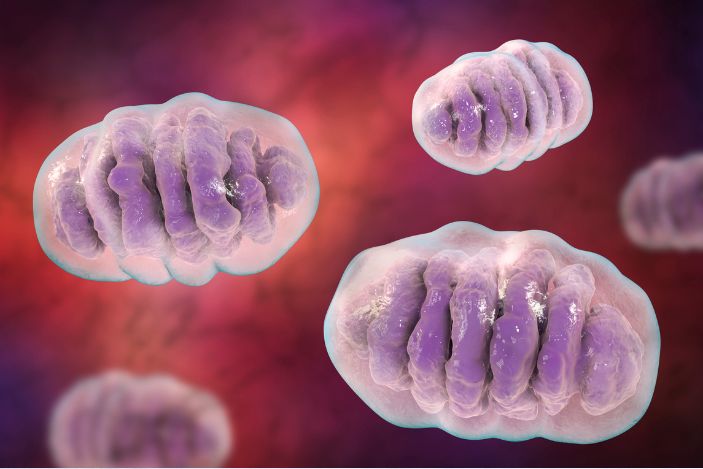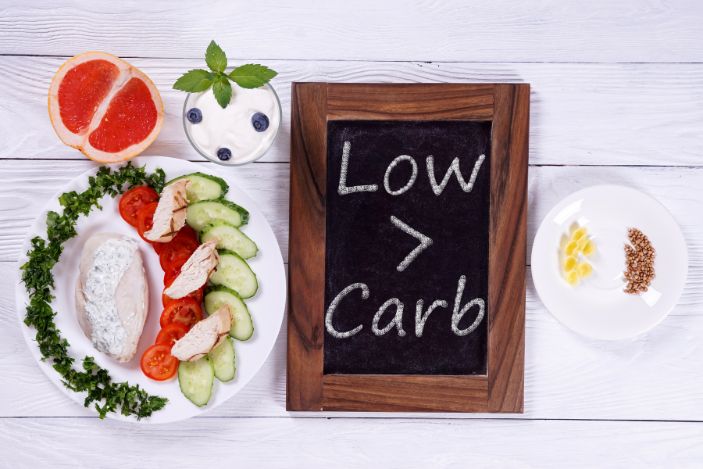You’ve probably heard about all the hype around keto, paleo, and other low carb diets. It’s a multibillion dollar industry! Everywhere you look there’s a new keto bar, or paleo cookbook, or some expert selling low carb propaganda. Interestingly, there are a multitude of health claims associated with these dietary Is Low Carb Good for Chronic Fatigue?approaches from more sustained energy, rapid weight loss, and even more beautiful skin, to name a few. So could these be the answer to chronic fatigue? High fat diets have also been associated with a lot of disease outcomes and are largely scrutinized by mainstream media. So who is right? Do we need fat and how much? What are the pro’s and con’s of eating more fat and how can eat fat the healthy way? Well allow me to nerd out and explain this topic for you.
Why do we need fat?
Contrary to popular belief in some cultures, fat is very important for health. In fact, you are actually made of fat and lots of it! Every cell in your body has a shell made of fat that creates the wall that makes up its outer structure. Your body also needs essential fats (fats you must consume via the diet) like omega 3 and omega 6 fats which are used to help regulate inflammation and are incorporated into cell walls all throughout your body PMID: 31147674. Cholesterol, another type of fat, is also crucial for our health and is used in a multitude of functions like building hormones, regulating cellular structure, and producing vitamin D.
When you don’t eat enough fat, your body isn’t able to absorb the fat-soluble vitamins A, D, E and K. These vitamins are essential for maintaining healthy skin, bones and organs. Without enough fat in your diet, you may develop dry skin, wrinkles and brittle nails. You may also be at increased risk for bone fractures and osteoporosis. In addition, without enough fat to support the liver, it can’t properly remove toxins from the body. This can lead to a build-up of toxins in the blood, which can cause fatigue, headaches and other health problems.
The recommended intake for fat is no less than 20% which is usually in association with a 2000 calorie diet PMID: 28854932. Eating too little can deprive the body of what it needs to function which will slowly take a toll on your health and energy levels.

How do we use fat for energy?
Fat is an important energy source for the body. When we eat food, the body breaks down the fats into glycerol and fatty acids. The glycerol is typically used for energy production, while the fatty acids are stored in the body’s fat cells. When we need more energy from fat, the body releases the stored fatty acids into the bloodstream. The fatty acids are then transported to the muscles, where they are broken down and used for energy.
The process of breaking down fat for energy is called lipolysis and occurs in the mitochondria. During lipolysis, the fatty acids are broken down into smaller molecules called acetyl coA, which enters the Krebs cycle. The next step in the Krebs cycle is the oxidation of acetyl-CoA, which produces two molecules of carbon dioxide and four molecules of ATP. The final step in the Krebs cycle is the reduction of NAD to NADH, which recycles the NAD molecules via the electron transport chain, creating another 28 or so ATP. The ATP molecules are then used by cells to perform 1000s of enzymatic reactions that keep you alive. PMID: 19136979
Why is a lower carb higher fat diet better for chronic fatigue?
When your body needs energy, it typically decides on whether to use carbohydrate or fat. This decision is mostly based off how much energy it needs and how fast. When your body doesn’t need a lot of energy all at once, it uses fat. This is because fat is a cleaner less toxic energy source and produces less oxidative stress. Similar to the way different types of fuel can produce different types of pollution, different food energy sources can produce different types of toxicity in the process. So when your body needs more energy right away, it uses carbs, but this also accumulates more oxidative stress which requires more antioxidants to control. When oxidative stress gets out of hand damage to the mitochondria can occur. This is why excess exercise and over consuming carbs without a healthy intake of antioxidants can be damaging to your health.
As we learned in my last blog, chronic fatigue can be a result of too much mitochondrial damage, thus lower carb/higher fat diets can be a saving grace for an exhausted mitochondria. With enough intake of the right kinds of antioxidants, this can help the cells heal, reversing chronic fatigue.
Are there any issues with a high fat diet?
There are a few health issues associated with a high fat diet. For one thing, it can lead to excess consumption of calories if intake is not well tracked, thus leading to weight gain. Fat is more calorie-dense than other nutrients, so it’s easy to overconsume if you’re not paying attention. In addition, a high fat diet can be hard on your heart. Too much saturated and trans fat can increase your cholesterol levels and raise your risk of heart disease, especially if inflammation is also present. Furthermore, a high fat diet can contribute to gut dysbiosis and microbial inflammation which can affect the rest of the body including the joints, the brain, and the liver. This can lead to a number of health problems, such as arthritis, diabetes, and even cancer (PMID: 30483273)
How can you make a high fat diet healthy?
The primary issues with the high fat diet involve how it impacts gut health and you’re your overall inflammatory burden. This is partially due to the types of fats that are consumed and the lack of fiber that often comes along with the high fat diet. That said you can be partial with the types of fats you consume to reduce inflammation and also optimize the amount and variety of fiber in your diet to avoid any detrimental impacts on your gut health.
How to avoid inflammatory fats:
Inflammatory fats are primarily going to include omega 6 fats and trans fats. Omega 6 fats are utilized by the body to promote inflammation, and are necessary to help your body heal. However, when there is an overabundance of omega 6 fats, your body overproduces inflammation which can lead to a build up of chronic health issues. Since the body is always trying to balance out omega 6 with omega 3 fats, it’s best to try and consume a sufficient amount of omega 3 fats in ratio to omega 6 fats.
This is easily done by avoiding fried foods while eating out, using avocado oil or olive for cooking or store bought dressings, and consuming at least 2-4 servings of fatty fish such as salmon, sardines, and mackerel per week. You can also supplement with omega 3 fish oils if you can’t get enough in your diet.

How to optimize the amount and variety of fiber in your diet:
Fiber on the other hand is a mixed bag of options. Most people just think about fruits and vegetables as a source of fiber but there’s far more to the variety that is available. In fact getting 6 cups of fruits and vegetable will usually only land you around 16-20 grams of fiber per day. Thus it’s almost impossible to get enough from fruits and vegetables alone. The key is to add in extra fiber using beans and legumes, or getting extra fiber from high fiber snacks like nuts, seeds, and whole grains. A great supplement to consider for extra microbial support is fiber mend which contains PHGG, apple pectin, and green tea. The green tea is a polyphenol which another indigestible component of our food that our gut bacteria love.
A few high fiber foods to choose over others would be:
- Raspberries
- Pomegranate
- Asparagus
- Artichoke
- Black beans
- Lentils
- Apples
- Oatmeal
- Chia seeds
- Flaxseed

Takeaways
Overall, awhigh fat low carb diets are all the craze, but can still be a complex shift to embrace. Yet, since chronic fatigue is often a product of mitochondrial breakdown, eating lower carb diets can be a better dietary choice to help them heal. Although, the high calorie intake can be risky in the sense of weight gain. Thus be sure to monitor your overall intake and activity levels and adjust as needed for ideal energy levels. Otherwise, the key to keeping the high fat diet a healthy one is to choose the right types of fats, and to eat them in the right balance. Eating plenty of omega 3 and avoiding excess omega 3 fats. In addition, consuming plenty of fiber from a variety of different sources can make all the difference to your gut microbiome. Keep your gut in check and your diet balanced, and your high fat diet will serve to make you healthier instead of sicker.







No responses yet